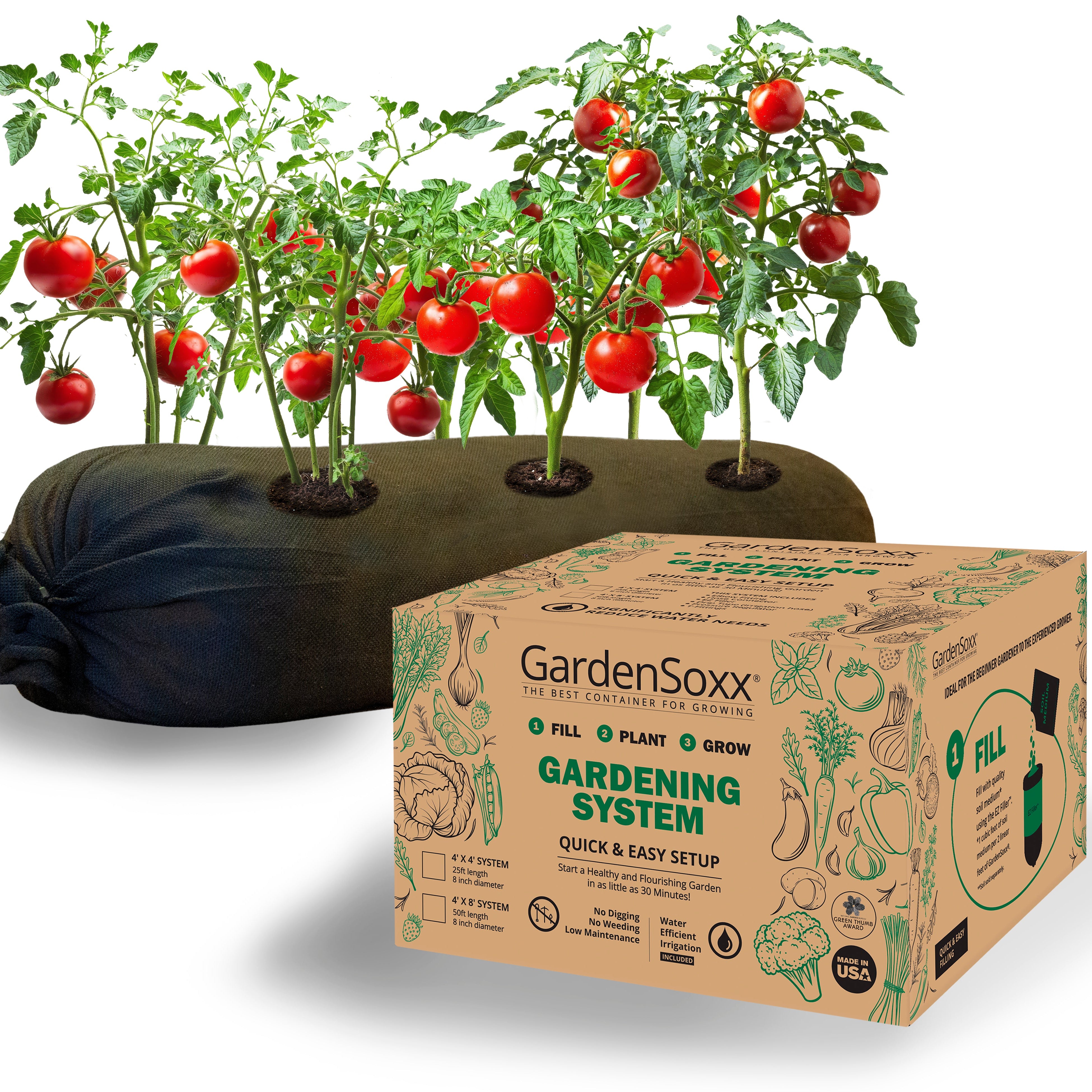Spinach
This easy-to-grow dark, leafy green is a great option for anyone looking to increase their iron intake without eating more meat. Gardeners with a knack for how to grow spinach are likely aware that this versatile green is packed with vitamins, is deliciously eaten raw or cooked - and can also be creatively hidden in some recipes to give picky eaters a few extra nutrients.
Adding it to your morning smoothie can keep blood pressure and energy levels stable throughout the day, boost your brain power, and balance your gut health. It is also a reliable crop in most growing zones and can yield a consistent harvest throughout the growing season.

Growing spinach in GardenSoxx® | Plant Family: Amaranthaceae
Different Varieties of Spinach
The different varieties of spinach fall into three main categories, each with a range of cultivars to choose from. Savoy spinach is the common variety seen in grocery stores, with curly yet tender leaves that have a deep, glossy green color. Semi-Savoy is a slightly curly hybrid between Savoy and Flat Leaf, with tender green leaves that are easier to clean. Flat-leaf spinach is often used for cooking, canning, or freezing - as some cultivars can be slightly less tender.
A quick-growing cultivar that works well in cool weather but is also a heat-tolerant spinach is the Equinox - a Savoyed variety with large leaves and long stems. Leaves will reach maturity in 28 days, allowing gardeners to sow and harvest multiple times throughout the growing season.
The ultimate curly cool-season cultivar is Bloomsdale, with large, extra curly, dark green leaves. Leaves mature in around 30 days from planting and should be sown in cooler temperatures. In certain regions, this variety can be harvested well into the winter.
A great choice for summer spinach is the Acadia cultivar - a semi-savoy variety with a slight curl and a resistance to bolting in hot weather. The large, dark green leaves can be harvested multiple times from the same plant, in as little as 28 days from seeding.
With a slightly smaller leaf and a high resistance to downy mildew, the Sunangel semi-savoy cultivar is another popular choice for the home garden. This quick-growing variety can be harvested many times and is also excellent when harvested early as baby spinach.
Fast to grow, the reliable Auroch cultivar is a Flat-leaf variety with long, sturdy stems that can be picked as baby spinach or left to mature and harvested throughout all growth stages. Best for cooler season growing, the seeds should be planted in very early spring and again in late summer or early fall.
For those who prefer baby spinach, the Seaside cultivar is a flat-leaf variety that stays relatively small. It is slower to bolt, which also makes it a great variety for warmer weather. Sow in early spring and harvest in about 30 days from planting.
Nutritional Information For Spinach
Nutritional Facts - per 100/g
| Nutrient | Amount | % Daily Value |
|---|---|---|
| Calories | 23 | - |
| Total Fat | 0.4 g | - |
| Sodium | 79 mg | - |
| Potassium | 558 mg | - |
| Dietary Fiber | 2.2 g | - |
| Sugar | 0.4 g | - |
| Protein | 2.9 g | - |
| Vitamin C | - | 46% |
| Iron | - | 15% |
| Vitamin B6 | - | 10% |
| Magnesium | - | 19% |
| Calcium | - | 9% |
How to Grow Spinach in Your GardenSoxx®
Spinach can be planted from seed early in spring, as soon as the soil can be worked. It is well-suited for less compact soil as it puts out a deep taproot that will bring up nutrients as needed. Seed should be sown about half an inch deep and 2-3 inches apart, in a shaded area that still gets some sun throughout the day.
Spinach Seed to Harvest Time: 40 - 50 days

How to Harvest Spinach
One the growing spinach plants have at least 6-7 leaves over 4 inches, start cutting off the outer leaves for harvest, leaving the smaller ones to continue growing from the center. This will ensure a longer production period and should allow you to harvest more from your plants. If spinach begins to bolt, cut the main stem at the surface of the soil, leaving the roots in the ground to provide nutrients for future crops.


















































